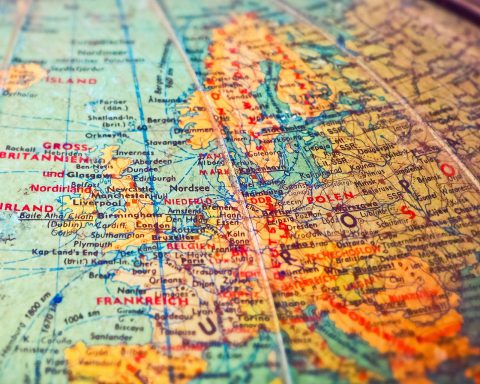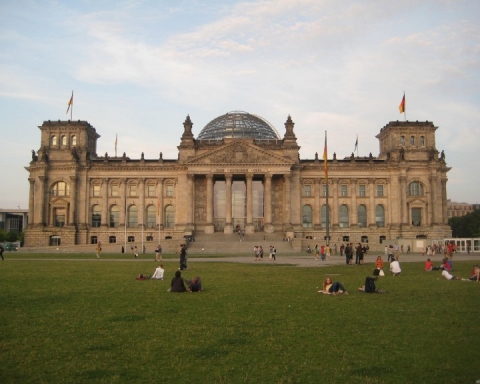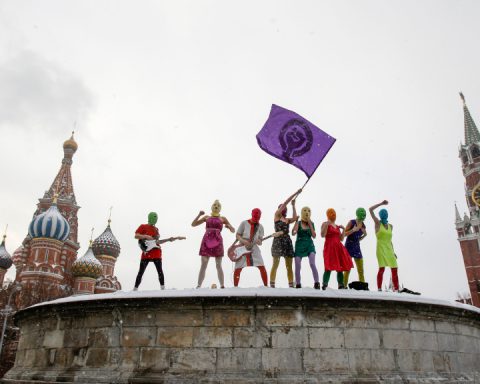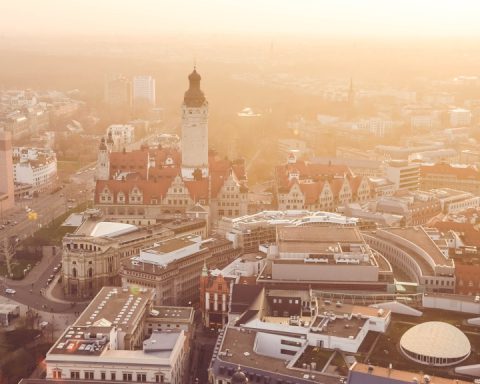Only a few days are left before Germany’s Federal Election on Sunday, 24 September. For many weeks, the streets of our city have abounded with party election posters, in addition to ads and appearances in the media.
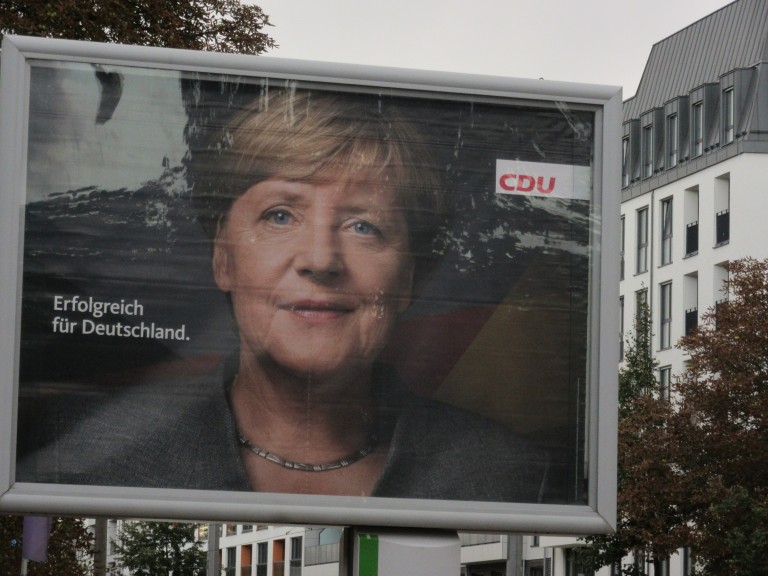
Where do the political parties come from, what do they stand for, and how many votes can they win?
Even though most of us are familiar only with the largest, widely known parties – which are also those that have the money for many election posters and the like – in total, no fewer than 42 parties are running for the Federal Diet (Bundestag). The smallest count a few hundred members.
Among the smaller parties – some of which run only in certain regions – there are some categories we can identify:
(1) Parties that rest on comprehensive ideologies, either from the extreme right – the National Democratic Party (NPD, founded in 1964), The Right (Die Rechte, 2012); or extreme left – the Communist Party (DKP, 1968), the Marxist-Leninist Party (MLPD, 1982).
(2) Parties that, at least to some extent, want to transcend ideologies by uniting people of different backgrounds and opinions and finding pragmatic solutions – the Free Voters (Freie Wähler, 2009), the German Center (DM, 2013).
(3) Parties that represent the interests of a particular group such as senior citizens – The Greys (Die Grauen, 1989/2017); or vegetarians and vegans – V-Party3 (V-Partei3, 2016).
(4) Parties that struggle for one certain political measure: the Party of Bavaria (Bayernpartei, 1946) wants Bavaria to secede from the German Federal Republic in order to become an independent country; the Alliance for a Basic Income (Bündnis Grundeinkommen, 2016) wants to introduce an unconditional basic income for everyone in Germany.
(5) Parties that make grotesque demands and proposals in order to satirize politics: The Party (Die Partei, 2004) wants to limit the price of beer by law and implement “double” as much social justice as the Social Democrats (SPD); the Mountain Party (Bergpartei, 2011) is, according to its name, committed to “eco-anarchism” and “real dadaism”.
Small parties not belonging to any of those categories stand, like the large parties, for a non-extreme ideology, be it left – the Ecological-Democratic Party (ÖDP, 1981); or right of the center – the (libertarian) Party of Reason (Partei der Vernunft, 2009).
But for all that, out of the 42 parties competing in the election, 35 will, in the results, be subsumed under the tag “miscellaneous”, because only the seven largest parties have realistic chances to each obtain the minimum of 5% of all votes required to enter the Bundestag.
The reason for that threshold, stipulated by German electoral law, lies in historical experience.
In the Weimar Republic (1919–1933), the first fully democratic Germany, there was no such rule. As a result, the National Parliament (Reichstag) found itself hamstrung by up to 17 different factions unwilling to cooperate, so that the legislative became prey for the Nazis when they took over in 1933.
In the Bundestag, by contrast, since 1953, there have never been more than five factions. In the next edition, there may be six, representing the parties I will discuss next.
According to a survey from 14 September, the strongest contestant is, with 37%, the CDU/CSU. It consists of two sister parties: the Christian Democratic Union (CDU, founded in 1950), and the Christian Social Union (CSU, 1946). In elections, the CDU runs only outside of Bavaria, and the CSU only in Bavaria. Together, they form Germany’s conservative Union and one joint faction in the Bundestag.
Still, the Bavarian branch, the CSU, insists on its formal autonomy. This is due to Bavaria’s strong regional identity, which, at least after World War II, was Catholic and agrarian, whereas the CDU represented the mostly Protestant and industrial inhabitants of former Prussia (Northern and Western Germany).
The attribute “Christian” in a party’s name does not, at least nowadays, mean much anymore.
The Christian churches exert little influence on the Union, and among its members there are Christians as well as Muslims, non-believers, and others. Moreover, under its Chairwoman (since 2000) and Federal Chancellor (since 2005) Angela Merkel, the party’s policies have greatly moved from the right towards the left. For example, Merkel suspended compulsory military service, pulled out of nuclear energy, admitted large numbers of refugees, and, most recently, allowed same-sex marriage.
On the one hand, conservative party members, not only from the generally more conservative CSU, disagree with such decisions; on the other, Merkel’s ideological “flexibility” seems to be the cause of her sustained popularity, thanks to which she is well on the way to her fourth chancellorship.
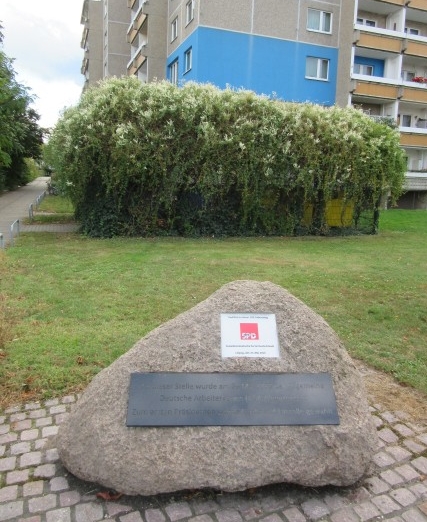
Second in the survey is, with 20%, the Social Democratic Party (SPD, 1863), founded (albeit under a different name) here in Leipzig over one and a half centuries ago. Back then it was the revolutionary representation of the “working class”. Also in the Federal Republic (since 1949), the SPD has understood itself as the party of social justice.
In 1959, the SPD toned its orientation down from socialist to social democratic, so that it could win its first chancellorship (defeating the Union) ten years later.
In all three federal elections since 2005, though, the SPD has succumbed to the Union, which – given the latter’s current lead by 17 percentage points – may again happen this time, despite the efforts of the SPD’s top candidate, Martin Schulz.
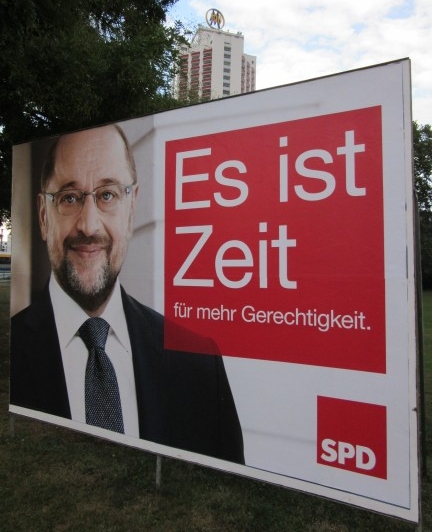
The party’s chronic weakness stems from a set of reforms initiated in 2003 by its third and – so far last – Federal Chancellor Gerhard Schröder (1998–2005). His so-called “Agenda 2010” cut, among other things, benefits for the unemployed, and liberalized employment law.
Before those reforms, Germany’s economy had been undergoing a long, structural crisis. Since then, the country has, thanks to reduced labor costs, turned into Europe’s powerhouse, with high rates of growth and low rates of unemployment. On the other hand, an increasing number of people can’t earn a living from their – irregular, precarious – job(s), and socioeconomic inequality widens.
As a consequence, the SPD lost its majority in the 2005 elections, Schröder lost his office (to Merkel), and leftist members of the SPD quit the party in order to join what they thought would still be a “truly” social party: the Party of Democratic Socialism (PDS, 1990), since 2007 known as The Left (Die Linke).
Historically, this party is the (democratic) successor of the Socialist Unity Party (SED), which governed the GDR until its collapse in 1989/90. Accordingly, the Left still draws most of its support from regions in East Germany. In the survey, it reaches 9%, some of which would have belonged to the SPD before 2003.
As long as the SPD doesn’t thoroughly revise “Agenda 2010” (and Schulz, as a rather moderate social democrat, isn’t the person to do that), it will not, in all likelihood, win (by itself) another federal election – especially if the CDU/CSU remain as “leftist” as under Merkel.
From 2005 to 2009, and from 2013 to the present, the SPD has still been part of the government, as the Union’s junior partner in a “Big Coalition”. Yet in the long run, those partnerships have harmed rather than helped the SPD, as again illustrated by the current election campaign.
The public credits most of the government’s successes, including those prepared by the SPD, to shining Chancellor Merkel, whereas Martin Schulz faces the predicament: How can I campaign against Merkel’s policies if my own party has been co-responsible for those policies for eight out of the last twelve years?
Couldn’t the SPD team up with other parties, this time as senior partner of a government coalition? A cooperation with (at least parts of) the Left is, until further notice, impossible due to “Agenda 2010” and because the pacifist Left demands, when it comes to foreign policies, radical measures such as a German exit from NATO – measures totally unacceptable for most other parties including the SPD.
The latter’s preferred coalition partner would be Alliance 90/The Greens (Bündnis 90/Die Grünen, 1980/1993).
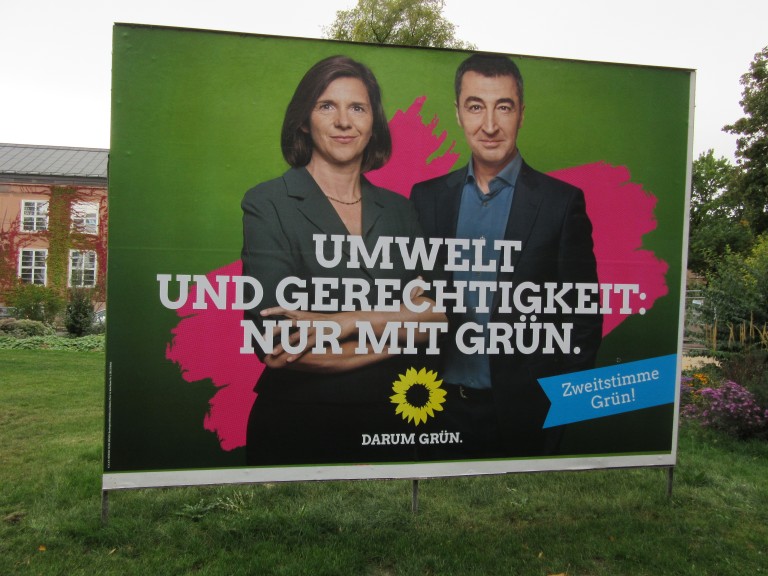
Founded in West Germany (after German reunification, the West German Greens merged with the East German Alliance 90) in times of Cold War and massive environmental pollution, the Greens advocate disarmament, civil rights, and a sustainable use of natural resources.
In the survey, they score 7.5% – surprisingly low, given that the effects of human-made climate change have started wreaking havoc, and German cars have turned out to pollute the air much more than manufacturers had been claiming. Apparently, in times of refugee crisis and Trump, voters worry about other things than “green” policies.
Yet even the CDU/CSU will need a coalition partner to again reach a governmental majority. If it’s no longer the SPD, Merkel’s first choice would be the Free Democratic Party (FDP, 1948). As the party of liberalism, it wants the state to interfere within people’s lives as little as possible. Already from 2009 to 2013, Chancellor Merkel led a coalition of her Union and the FDP.

However, the FDP’s actions in the government, such as a tax cut for the owners of hotels, were perceived as exclusively catering to groups with better incomes and their lobbyists.
Thus, in the 2013 election, the party dropped under the threshold of 5% of the votes, and had to leave the Bundestag for the first time since 1949. This year, by contrast, the refreshed Liberals seem to be coming back, with 9.5% in the survey.
Yet the party scoring highest in the survey after the CDU/CSU and SPD is, with 12%, the Alternative for Germany (AfD, 2013). The youngest of Germany’s larger parties was founded by economists and other conservative thinkers in order to abolish the euro, since they regarded the construction of the crisis-ridden common European currency as flawed and counterproductive.
However, that agenda soon attracted people with, to put it mildly, very conservative views not only economically: nationalists, xenophobes, etc. They gradually pushed the party towards the extreme right, so that many of the original members quit and now are ashamed of the “monster” they have created.
In the meantime, the AfD has entered most regional parliaments in Germany and may make it into the new Bundestag as well.
Many of its moderate members and supporters formerly sided with the CDU/CSU, but stopped doing so because of Merkel’s “leftist” policies – in this regard, the AfD is for the Union what the Left is for the SPD.

Nevertheless, just like the Left would be too extreme for the SPD, the AfD is too extreme for the Union to be acceptable as coalition partner.
Therefore, if the Union wins the election, and doesn’t continue its partnership with the SPD, and the FDP alone isn’t strong enough a coalition partner, a so-called “Jamaica Coalition” of the CDU/CSU, FDP and Greens may be the most likely outcome. According to the survey, it would possess a combined 54% of all votes.
However, the last U.S. election has taught us never to trust surveys, hasn’t it? Also in Germany, results will be clear only in the evening of 24 September.

